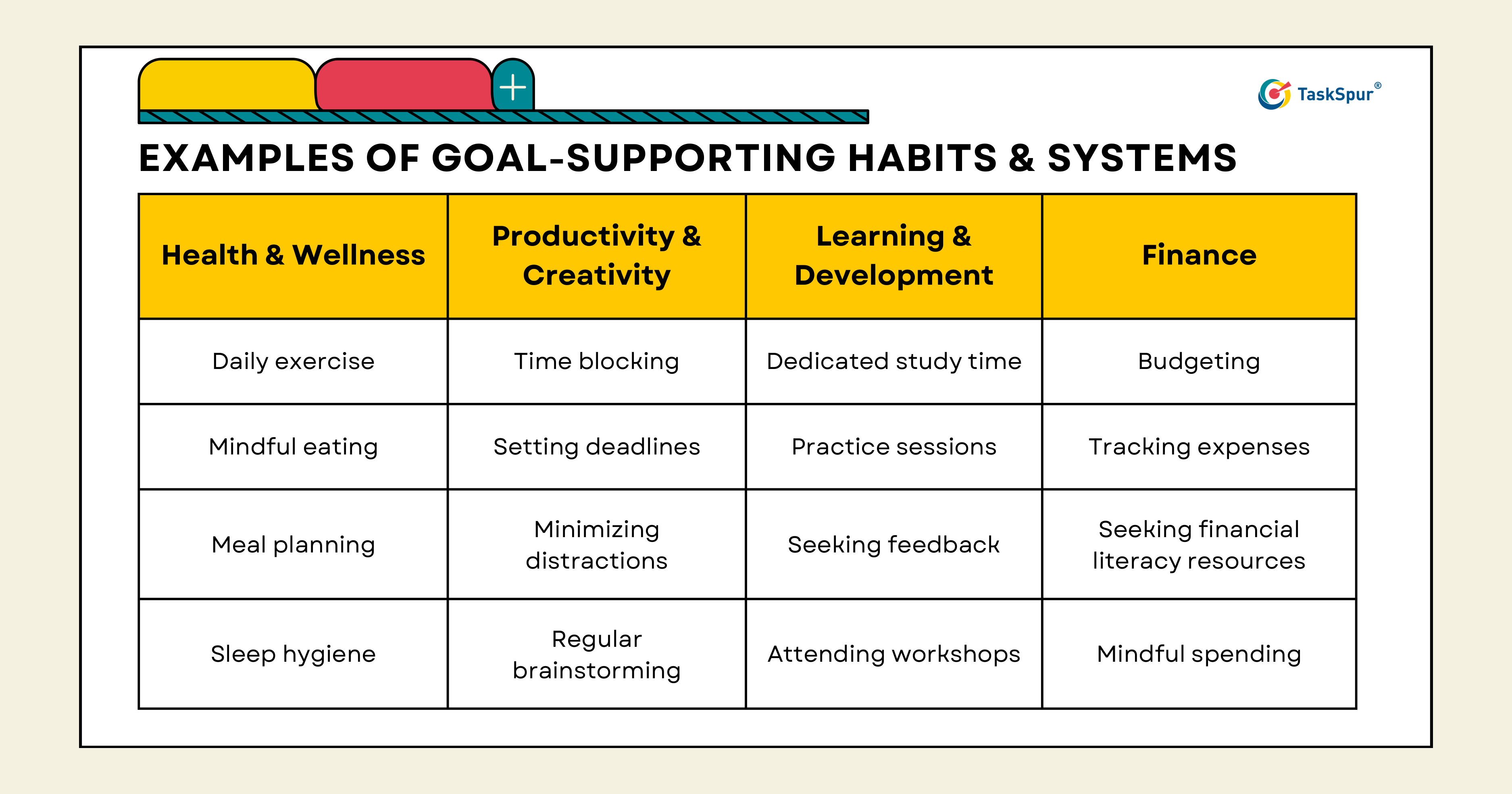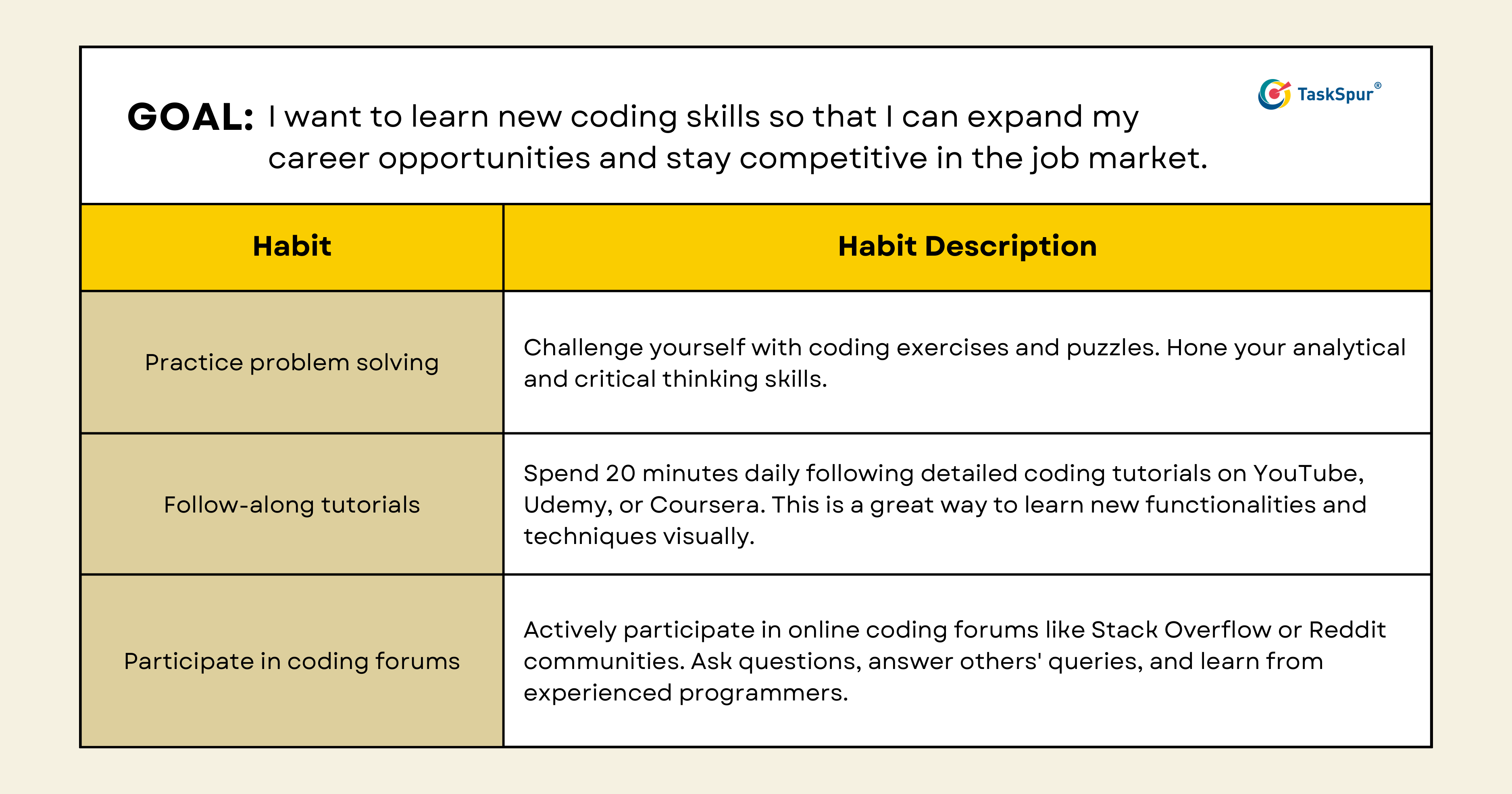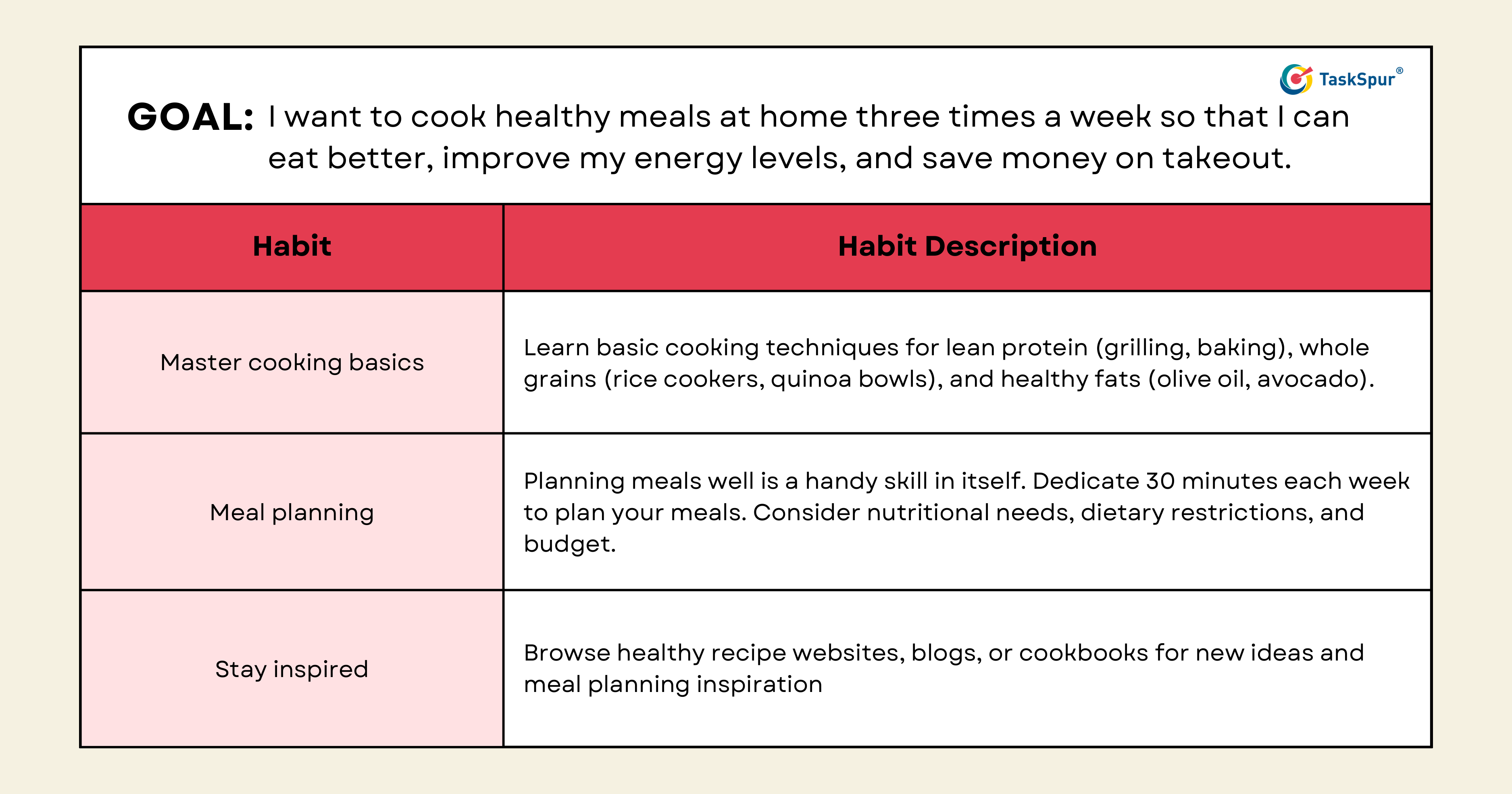The Best Way to Achieve Goals: A 10-Step Formula for Success
"The journey of a thousand miles begins with a single step," Lao Tzu wisely declared. But what if you don't know which step to take first? Starting your journey can be daunting, especially without a clear direction. This article serves as your personalized compass, offering a 10-step roadmap and an effective way to achieve goals. Each step empowers you with clarity, builds momentum, and instills the belief that your aspirations are within reach. Ready to embark on this transformative journey together? Let's take that first step!
Step 1: Know Your WHY
Anchoring your goal to a well-defined purpose creates clarity — a definite point of reference. When you’re clear about what you’re doing and why you’re doing it, figuring out your priorities becomes easier, and eliminating activities or tasks that don’t bring you closer to your goals becomes less tricky. On days when you feel less motivated, your why becomes your guide.
So how do you figure out your why?
Allison Walsh of Harvard Business Review suggests using the template statement below to find the reason behind your goals.
“I want to _________ so that I can _______.”
Here are some examples.
Personal
- I want to learn a new language so that I can travel more confidently and connect with people from different cultures.
- I want to start a meditation practice so that I can reduce stress and improve my focus.
Professional
- I want to learn new coding skills so that I can expand my career opportunities and stay competitive in the job market.
- I want to take on a leadership role at work so that I can develop my skills and make a bigger impact on the organization.

Health
- I want to cook healthy meals at home three times a week so that I can eat better, improve my energy levels, and save money on takeout.
- I want to reduce my screen time by 30 minutes per day so that I can be more present in the moment, improve my sleep quality, and make more time for other activities.
Finance
- I want to pay off my credit card debt within one year so that I can reduce my financial stress and free up money for other goals.
- I want to create a budget and track my spending so that I can gain control of my finances and make informed decisions about my money.
Record your whys in a journal, write it on a post-it note, and place it in an easy-to-see location to serve as a daily reminder of your purpose.
Step 2: Strengthen your self-discipline
If you’re honest, you know that the ultimate responsibility for achieving your goals lies solely with you. Motivation is nice but after the initial excitement, the work can feel painful. No motivational speaker, app, or magic bullet can replace the internal drive and self-discipline necessary to see things through. It's an empowering truth, but also one that demands commitment and self-awareness.
Understand that self-discipline is the foundation upon which your goals are built. Without a strong foundation, even the grandest aspirations can crumble. But fret not, for building discipline is a skill that can be honed and strengthened. Here's how.
Learn your weaknesses
Self-reflection is your first step. Identify the areas where you typically falter. Is it procrastination, succumbing to distractions, or lacking focus? The best way to achieve your goals is to acknowledge these weaknesses. It is not about self-blame; it’s about understanding yourself and the areas where you need to work on.

Know what triggers your urges
What are the cues that tempt you off track? Maybe it's scrolling through social media when you should be working, or reaching for sugary snacks during crunch time. Recognizing these triggers empowers you to anticipate them and develop strategies to keep you stubbornly on track.
Remove temptations
Out of sight, out of mind, right? If social media distracts you, silence your notifications. Craving unhealthy snacks? Stock your pantry with healthier alternatives. Minimizing environmental cues that derail your progress is an effective strategy for blocking temptations.
Forgive yourself and move forward
We all stumble. Don't dwell on setbacks. Instead, acknowledge the slip-up, learn from it, and recommit to your goals. Self-compassion fuels resilience, not guilt. Every time you bounce back, you’re training your brain to not take failure too seriously and you’ll feel good about it.
Work with people you feel inspired by
One of the best ways to achieve your goals is to surround yourself with individuals who embody the discipline and work ethic you admire. Their energy and commitment can be contagious, which can provide you with invaluable support and motivation.
Once you establish self-discipline, you’ll be ready to tackle any goal you set your mind to.
Step 3: Write SMART Goals
Writing down your goals seems straightforward, but it's a process that often trips people up. Simply scribbling aspirations on a piece of paper isn't enough. To transform your goals into a clear roadmap to success, consider the SMART framework: Specific, Measurable, Achievable, Relevant, and Time-bound.
SMART goals offer a powerful antidote to vague wishes. They provide a laser-focused approach that guides you every step of the way.

Image by RDNE Stock project on Pexels
What are SMART Goals?
Specific: Be crystal clear about what you want to achieve. Instead of "get fit," write "run a 5k in 6 months." Use strong verbs, pin down the numbers, and avoid ambiguity.
Measurable: Quantify your progress. Track your weight loss, running times, or completed tasks. Numbers will help keep you motivated and on track.
Achievable: Set ambitious yet realistic goals that align with your skills and resources. Don't aim for a marathon if you're just starting to run.
Relevant: Connect your goals to your bigger picture. How will running a 5k improve your overall health and well-being? Ensure your goals resonate with your values and aspirations.
Time-bound: Set a clear deadline to create urgency and focus. Aim for your 5k race on a specific date and set intermediate milestones to stay on track.
Don't be afraid to use tools like goal-setting templates or apps to structure your SMART goals. Let’s look at examples of SMART goals.
Health & Wellness
Run a 5k race within 6 months, training 3 times a week and gradually increasing running distance each week.
Work & Career
Secure a promotion to Senior Software Engineer within 1 year by completing online courses, mastering new programming languages, and getting 3 positive performance evaluation reviews.
Personal development
Learn Portuguese fluently within 8 months by dedicating 30 minutes daily to language learning apps and attending online conversation classes twice a week.
Step 4: Establish goal-supporting habits
After you’ve fortified your self-discipline and written down your goals, it’s time to translate that inner strength into tangible action. Let’s talk about building habits. Establishing positive repetitive behavior is a great way to achieve your goals consistently. Every goal thrives on unique habits. Ask yourself: what consistent actions will propel me towards my goal? Here are some guiding questions.
- What daily or weekly routines would support my progress? For a fitness goal, it might be daily workouts and meal prepping. For writing a novel, it might be regular writing sessions and research time.
- What skills do I need to develop or refine? Learning a new language requires daily practice, while public speaking demands consistent exposure and feedback.
- What potential roadblocks do I expect to encounter? If procrastination is your weakness, schedule time for focused work and eliminate distractions.
Here are some examples of goal-supporting habits and systems.

Let’s use real-life goals as examples. What would their goal-supporting habits look like?




Many people who fail to achieve their goals give up because they are unable to establish these repetitive, persistent behaviors that are required to make progress. But once you’ve established these habits, half of the work is done.
Step 5: Write an action plan
The next step in the process is to organize your habits and systems so that their cumulative value goes toward your goal. This is where your action plan shines.
Think of your action plan as a roadmap leading you directly to your goals. It breaks down your objectives into manageable tasks, assigns deadlines, and keeps you on track throughout your journey.
Break it Down
Start by dissecting your goal into smaller, achievable tasks. Ask yourself: What key milestones do I need to reach? What specific actions will get me there? Be as detailed as possible!
Embrace SMART
Remember the SMART acronym? It stands for Specific, Measurable, Achievable, Relevant, and Time-bound. Apply this principle to each task in your plan. For example, instead of "learn a new language," your task could be "complete 10 Duolingo lessons per week for the next 3 months."
Prioritize ruthlessly
Not all tasks are created equal. Identify the most critical steps that move you closest to your goal and prioritize them accordingly. This ensures your focus on actions with the highest impact.
Dates & Deadlines
Procrastination is the enemy of progress. Set realistic deadlines for each task to create a sense of urgency and keep yourself accountable. Remember, flexibility is key. Adjust deadlines as needed, but strive to stay on track.
Resources & Support
What tools, resources, or help do you need to achieve your targets and tasks? Identify any external support you might require, whether it's online courses, mentors, or accountability partners. Do not be afraid to ask for help!

Image by JESHOOTS.COM on Unsplash
Track & Celebrate
Your action plan is a living document. Track your progress, celebrate milestones, and adjust your plan as needed. Seeing your progress is a powerful motivator, so acknowledge your achievements, big and small!
Step 6: Plan your rewards
After diligently defining your goals, establishing your systems, and creating a roadmap, it's time to turn your attention to a powerful motivator - rewards. Incorporating a thoughtful reward system into your goal-setting process can significantly enhance your motivation to keep going and eventually achieve your goals. It also makes the whole process more fulfilling and enjoyable.
Here are some tips on how to establish a reward system that will make you feel good.
Reward small wins.
We all love a little instant gratification. When you reward your brain for doing work, no matter how small, you’re rewiring your brain to think that doing the work is a positive thing, making progress much more likely and enjoyable. When you incentivize progress over big results, you will love the journey too! So reward yourself for finishing tasks (e.g. a guilt-free 25-minute break) and milestones (a spa day after reaching your monthly quota out of your annual goal).
Tailor your rewards to your goals.
If your goal is fitness-related, consider treating yourself to a relaxing massage or investing in new workout gear. For career achievements, perhaps a professional development course or a well-deserved day off would be fitting. Personalizing rewards makes them more meaningful and reinforces the connection between effort and success.
Document your rewards.
Keep a record of your planned rewards and the milestones associated with them. This documentation serves as a visual reminder of the treats awaiting you as you progress. It can be as simple as a checklist or a more elaborate chart, but having a clear reference helps maintain the excitement and anticipation of upcoming rewards.

Image by Sebastian Arie Voortman on Pexels
Share your successes.
Don't hesitate to share your achievements with friends, family, or a support network. Their encouragement can amplify the joy of your accomplishments, making the journey to achieving your goals more fulfilling. This way, your win is everybody’s victory too!
Step 7: Start small and continue incrementally
The next step in the process is to start. Don’t wait for conditions to be “just right”; the right time may never come. Instead, get started right away, no matter how small, because that’s where the true progress happens. Incremental progress, often overlooked, is the key to sustainable and achievable goal achievement. These are the reasons why.
- Breaking down your big goal into bite-sized tasks makes it feel less intimidating and more manageable.
- Completing small tasks is enough to boost your confidence and motivate you to keep going.
- Completing small tasks keeps your forward momentum which makes it easier to tackle challenges forward and the bigger tasks later on.
- Starting small allows you to be flexible and adapt your plan as needed.
So, how do you embrace incremental progress?
- Start small. Begin with tasks so small they seem almost insignificant. This removes the barrier of entry and makes it easier to take that first step.
- Focus on consistency. Aim for consistent action, even if it's just 5 minutes a day. Regular progress, no matter how small, is more effective than sporadic bursts of activity.
- Count the times you get back up. Don't get discouraged by setbacks. View them as learning opportunities and adjust your plan accordingly. Remember, focusing on progress, not perfection, is the best way to achieve goals.
Step 8: Track your progress regularly
Setting goals is exciting, but it's the consistent action and monitoring that really moves you forward toward achieving your goals. Tracking your progress regularly is your secret weapon for staying motivated, identifying roadblocks, and celebrating your achievements.

Image from Unsplash+
Here's how to be better at tracking your progress.
1. Choose the right tools
Apps: Habit trackers, goal management platforms, and bullet journals are popular options.
Spreadsheets and calendars: For a more customizable approach.
Simple notes: Pen and paperwork wonders for some!
2. Focus on measurable metrics
Quantify your progress: Instead of "write more," aim for "write 500 words daily."
Track milestones: Celebrate reaching key benchmarks along your journey.
Use visuals: Charts, graphs, and progress bars can boost motivation.
3. Find your tracking rhythm
Daily: Ideal for short-term goals or building habits.
Weekly: Good for monitoring overall progress and adjusting strategies.
Monthly: Perfect for long-term goals and analyzing trends.
4. Make it a habit
Schedule tracking time: Block out 10-15 minutes in your calendar.
Integrate it into your routine: Track progress while brushing your teeth or waiting for coffee.
Find an accountability partner: Share your progress with a friend or mentor.
5. Analyze and adapt
Identify roadblocks: Analyze what's hindering your progress.
Adjust your strategy: Be flexible and adapt your approach as needed.
Celebrate wins: Acknowledge your progress, no matter how small.
Step 9: Get an accountability partner
The journey to achieving your goals is an amazing experience, but let's be honest, it can get tough sometimes. That's where an accountability partner comes in – your personal cheerleader, confidante, and gentle nudge when motivation wanes.
Benefits of having an accountability partner
- Sharing your goals with someone creates a sense of commitment and keeps you motivated, especially when facing challenges.
- A good partner will offer constructive criticism and help you identify blind spots you might miss on your own.
- Sharing your victories with someone who understands your journey makes them even sweeter.
- When you feel like giving up, your partner can be your cheerleader, reminding you of your "why" and pushing you forward.

Image by krakenimages on Unsplash
Questions to Help You Find an Accountability Partner
- Are they reliable?
- Do our values align?
- Do we share common interests?
- Are they capable of holding me accountable?
- Are there any potential logistical challenges?
- Are they capable of communicating honest feedback?
- Does this person genuinely believe in me and my goals?
- Are they available for the level of commitment you require?
- Are they sincere about helping me get to where I want to be?
- Are they transparent and willing to share their own challenges?
Step 10: Have a good time!
Often, we're so focused on the finish line that we tend to forget to enjoy the actual race. Remember: goal-setting is your personal journey, not just a destination. Make it an adventure you relish, not just a task you endure! Instead of focusing on the end goal, try to enjoy the process. The best way to achieve goals is to enjoy the progress, so incorporate activities that you actually enjoy, and reward yourself along the way. When challenges do come, try to view them as an opportunity for learning and growth. When successfully overcome, share the joy and victory with your family, friends, and support network. Supporting each other is one of the great joys of life. And finally, don't take things too seriously. Find the humor in living. Take the time to laugh and remember that trying in itself is its own reward.
Optimize your chances of success with TaskSpur
TaskSpur is a goal management and life management app created with you in mind. Every task you create on TaskSpur is tied to a bigger goal so that everything you do contributes to your bigger aspirations in life. If you’re looking for a goal-tracking app without all the fuss, this sensibly simple app may just be what you need. Check out TaskSpur today!
Download TaskSpur on Android | Download TaskSpur on your iPhone
Sign up or Login on your browser
References
- Walsh, A. (2022, May 4). 5 ways to make sure you achieve your goals this year. Harvard Business Review. https://hbr.org/2022/04/4-ways-to-make-sure-you-achieve-your-goals-this-year
- Marks, A. (2024, January 11). How to thrive when uncertainty becomes the new norm for governance. Forbes. https://www.forbes.com/sites/deloitte/2024/01/11/how-to-thrive-when-uncertainty-becomes-the-new-norm-for-governance/?sh=1bbdca3673cb
- Vredeveldt, A., & Perfect, T. J. (2014). Reduction of environmental distraction to facilitate cognitive performance. Frontiers in Psychology, 5. https://doi.org/10.3389/fpsyg.2014.00860
- Holt, N. (2023, September 12). How to avoid distractions at work and stay focused. Thriving Center of Psychology. https://thrivingcenterofpsych.com/blog/how-to-avoid-distractions-at-work-and-stay-focused/
- Ho, L. (2023, October 10). How to find an accountability partner to help you build habits. Lifehack. https://www.lifehack.org/862621/accountability-partner
- Zenhabits. (2022, April 18). A Guide to Developing the Self-Discipline Habit - zen habits. Zen Habits. https://zenhabits.net/self-discipline/